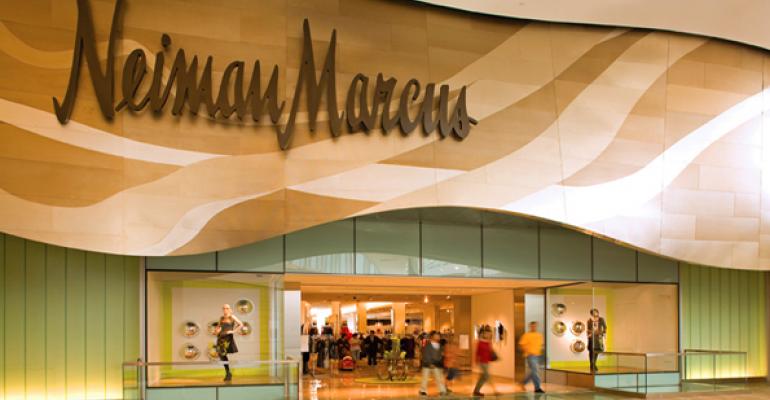The $6 billion price tag that Ares Management and Canada Pension Plan Investment Board (CPPIB) agreed to pay for luxury department store Neiman Marcus is raising some eyebrows. While Neiman Marcus is largely viewed as a well-performing chain in one of the stronger sectors of retailing, its limited growth potential might make it difficult for the buyers to make a profit on their investment, some consultants say.
For example, Pam Danziger, who runs Philadelphia-based luxury market research firm Unity Marketing, notes that in the five years since the Great Recession, “uber-affluent shoppers”—those who make up the core of Neiman Marcus’ clientele—have become more frugal with their purchases. Circa 2009, the uber-affluents (those who make more than $250,000 a year) were spending three to four times more on discretionary purchases than what the high earners (those with annual incomes of $100,000 to $250,000 a year) were spending. Since then, that gap has closed up, with the uber-affluents now spending only twice as much as the high earners, she notes.
“They’ve come out of the recession five years older and they’ve learned to cut back,” Danziger says. “Plus, luxury goods are much more appealing to younger folks than to older people. I think that betting on Neiman Marcus to continue to grow, and to grow at a rapid pace, is probably going to be a little bit challenging. The [buyers] have got their work cut out for them.”
On Sept. 9, Neiman Marcus’ private equity owners, including Warburg Pincus, Texas Pacific Group and Leonard Green & Partners, who bought the chain for $5.1 billion in 2005, entered into an agreement to sell the retailer to Ares Management and CPPIB for $6 billion. At closing, a portion of the $6 billion sum will be used to pay outstanding debt under Neiman Marcus’ bank credit facility. In June, the Neiman Marcus Group filed a registration form with the Securities & Exchange Commission in preparation for a possible IPO, but that deal never materialized.
Today, the company operates 79 stores, including 41 Neiman Marcus locations, 36 Last Call outlet stores and two Bergdorf Goodman stores. For the third quarter of fiscal 2013, ended Apr. 27, the retailer reported a 3.6 percent increase in same-store sales, including a 0.7 percent increase in the specialty retail segment and a 15.1 percent increase in online sales. Revenues for the retail segment totaled $855.7 million, while revenues from online transactions totaled $242.6 million.
In an official statement, David Kaplan, senior partner and co-head of Ares Management’s private equity group, noted that “We share a common vision with the company’s management team, led by its highly respected Chief Executive Officer Karen Katz, and together, we plan on investing meaningful capital into the business to ensure Neiman’s long-term position as the unparalleled leader in luxury retail. This investment fits with our longstanding approach of accelerating growth in companies in the consumer and retail sectors.”
However, Howard Davidowitz, chairman of Davidowitz & Associates Inc., a New York City-based retail consulting and investment firm, echoed Danziger’s comments. Neiman Marcus is a great brand, he concedes. And the luxury market remains very strong.
“My question is: where is the growth?” he notes. “It’s a very powerful, very good business, but they don’t own much real estate, unlike Saks Fifth Avenue, which owns the Fifth Avenue site in New York City with air rights. Neiman Marcus has leases. So right away, you don’t have that real estate undergirding the [purchase] price. And number two, if you pay a lot of money, where is the growth? You don’t see any malls being developed, so where are they going to go?”
Avenues for development
That’s not to say that it would be impossible for Neiman Marcus’ new ownership to find ways to grow the company. One possibility would involve expanding the off-price Last Call concept, which has been going into outlet centers—the one area of U.S. retail real estate that’s been booming in recent years. Both Saks Fifth Avenue and Nordstrom have had great success with their outlet concepts, so if Neiman Marcus could transform Last Call into a true outlet anchor and speed up new store growth, it has the potential to do quite well, Davidowitz says.
Then there’s the Bergdorf Goodman brand, which became part of the same company with Neiman Marcus in 1987 and which currently consists of only two stores, according to Michael Hirschfeld, senior vice president and co-leader of the national retail tenant services practice with Jones Lang LaSalle. The opportunity exists for Neiman Marcus to both open more Bergdorf Goodman stores and to develop its namesake department store in New York City, where it doesn’t currently have a presence.
“I think it’s a great purchase for a pension fund that’s looking for a return on its investment and an iconic brand,” Hirschfeld says. “On the surface, it makes a lot of sense. I think it’s very likely that in the not-too-distant future, you’ll see an obvious hole filled in the Neiman Marcus portfolio, which is New York City. And CPPIB may very well look for additional opportunities to expand the Neiman Marcus brand in the U.S. and Canada.”
Danziger and Davidowitz agree that the most obvious way for Neiman Marcus to grow would be through either the Last Call division or the international stage. They note, however, that the record so far has been mixed for U.S. retailers that have gone overseas. For instance, China and Russia would be the most logical places to enter for a luxury retailer today, according to Davidowitz, but Neiman Marcus would have to overcome cultural barriers in addition to forming a successful partnership with a local operator.
Still, even with uncertain growth options, there is “less risk in this transaction than in the acquisition of a trendier retailer,” according to Hirschfeld. “As we learned in 2008/2009, there are risks to everything, but I think the risks in this deal are lower than in other deals of this nature.”

